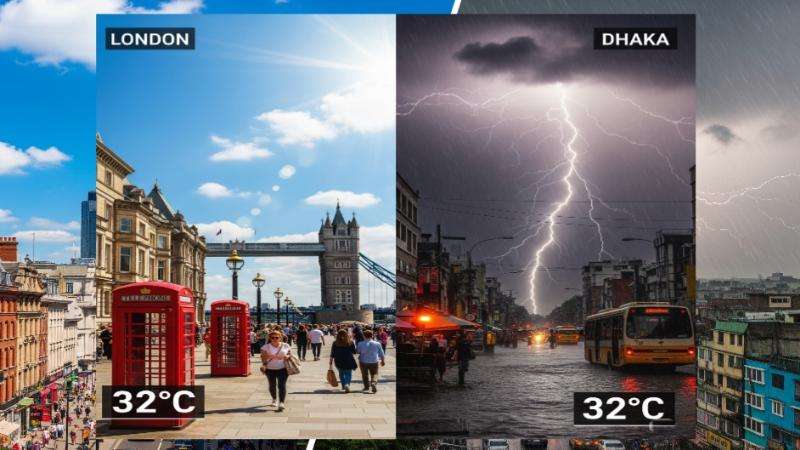
Foreign nationals residing on Slovenian territory who have not yet changed their plastic residence permit cards are urged to do so as soon as possible because the deadline for doing so is less than a month away.
Slovenia began issuing a new form of resident permits and residence registration certificates on February 14, 2022, according to a statement on the official government website.
“The deadline for replacing existing residence permit cards expires in one month, on August 3,” the Ministry points out.
As residence permits for third-country nationals are already issued as biometric documents in a uniform format in all European Union member states, the warning is directed to Swiss citizens and their family members, as well as family members of EU and European Economic Area citizens. Here are also included family members of Slovenian citizens.
Those living in Slovenia and belonging to any of the above-mentioned categories have been asked to exchange their current permits for a new residence permit card for a Swiss citizen or a new residence permit card at the administrative unit in in the area where they reside at any the latest by August 3.
“To replace the card, the individual will not pay an administrative fee, but will pay the cost of printing the card,” the Ministry highlights.
In order for Swiss citizens to get their new residence permit they will need to pay €19.85, whereas their family members will need to pay a service provider fee of €15.47. The latter fee will also apply to family members of Slovenia, EU and EEA citizens.
Data by the Statistical Office of Slovenia published in December 2021 show that one in seven residents in the country is an immigrant, with 38 per cent of the foreign-born population having immigrated to Slovenia between 2011 and 2021.
The majority of foreigners living in Slovenia, or 86 per cent of the total, come from former Yugoslav countries, with the top five biggest sources being Bosnia and Herzegovina, Croatia, Serbia, Kosovo and North Macedonia. The list goes on with Germany next, followed by Italy, Russia, and Montenegro.
 Foreign nationals residing on Slovenian territory who have not yet changed their plastic residence permit cards are urged to do so as soon as possible because the deadline for doing so is less than a month away.
Slovenia began issuing a new form of resident permits and residence registration certificates on February 14, 2022, according to a statement on the official government website.
“The deadline for replacing existing residence permit cards expires in one month, on August 3,” the Ministry points out.
As residence permits for third-country nationals are already issued as biometric documents in a uniform format in all European Union member states, the warning is directed to Swiss citizens and their family members, as well as family members of EU and European Economic Area citizens. Here are also included family members of Slovenian citizens.
Those living in Slovenia and belonging to any of the above-mentioned categories have been asked to exchange their current permits for a new residence permit card for a Swiss citizen or a new residence permit card at the administrative unit in in the area where they reside at any the latest by August 3.
“To replace the card, the individual will not pay an administrative fee, but will pay the cost of printing the card,” the Ministry highlights.
In order for Swiss citizens to get their new residence permit they will need to pay €19.85, whereas their family members will need to pay a service provider fee of €15.47. The latter fee will also apply to family members of Slovenia, EU and EEA citizens.
Data by the Statistical Office of Slovenia published in December 2021 show that one in seven residents in the country is an immigrant, with 38 per cent of the foreign-born population having immigrated to Slovenia between 2011 and 2021.
The majority of foreigners living in Slovenia, or 86 per cent of the total, come from former Yugoslav countries, with the top five biggest sources being Bosnia and Herzegovina, Croatia, Serbia, Kosovo and North Macedonia. The list goes on with Germany next, followed by Italy, Russia, and Montenegro.
Foreign nationals residing on Slovenian territory who have not yet changed their plastic residence permit cards are urged to do so as soon as possible because the deadline for doing so is less than a month away.
Slovenia began issuing a new form of resident permits and residence registration certificates on February 14, 2022, according to a statement on the official government website.
“The deadline for replacing existing residence permit cards expires in one month, on August 3,” the Ministry points out.
As residence permits for third-country nationals are already issued as biometric documents in a uniform format in all European Union member states, the warning is directed to Swiss citizens and their family members, as well as family members of EU and European Economic Area citizens. Here are also included family members of Slovenian citizens.
Those living in Slovenia and belonging to any of the above-mentioned categories have been asked to exchange their current permits for a new residence permit card for a Swiss citizen or a new residence permit card at the administrative unit in in the area where they reside at any the latest by August 3.
“To replace the card, the individual will not pay an administrative fee, but will pay the cost of printing the card,” the Ministry highlights.
In order for Swiss citizens to get their new residence permit they will need to pay €19.85, whereas their family members will need to pay a service provider fee of €15.47. The latter fee will also apply to family members of Slovenia, EU and EEA citizens.
Data by the Statistical Office of Slovenia published in December 2021 show that one in seven residents in the country is an immigrant, with 38 per cent of the foreign-born population having immigrated to Slovenia between 2011 and 2021.
The majority of foreigners living in Slovenia, or 86 per cent of the total, come from former Yugoslav countries, with the top five biggest sources being Bosnia and Herzegovina, Croatia, Serbia, Kosovo and North Macedonia. The list goes on with Germany next, followed by Italy, Russia, and Montenegro.







.svg)
